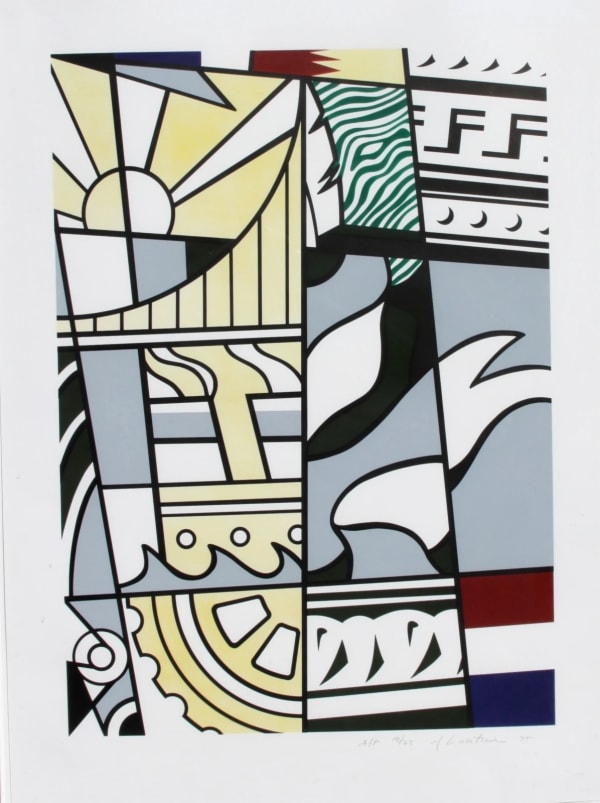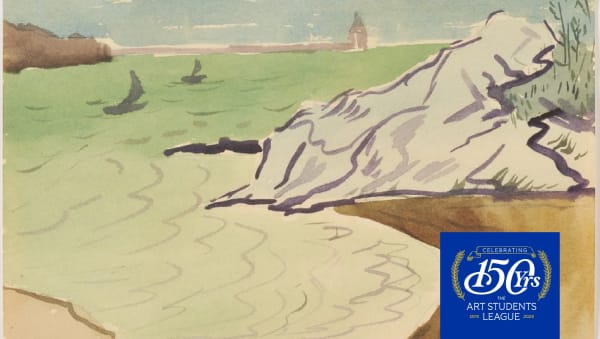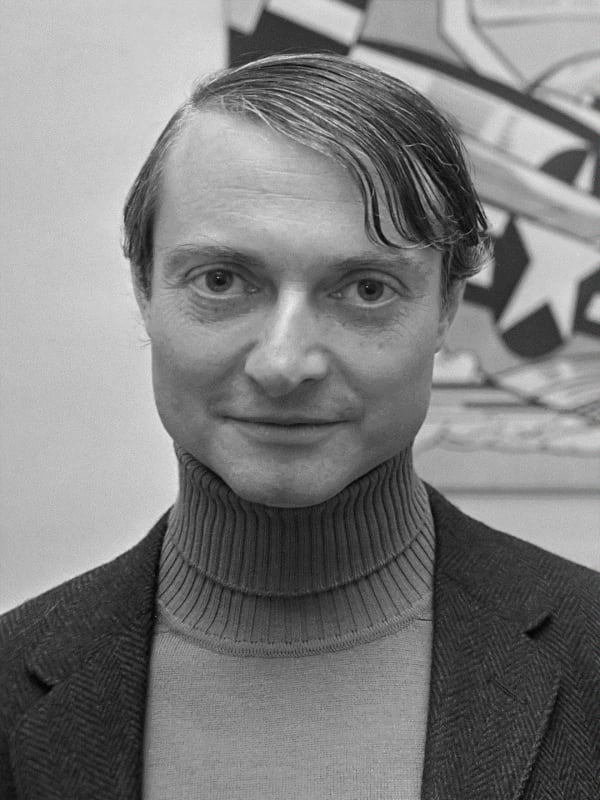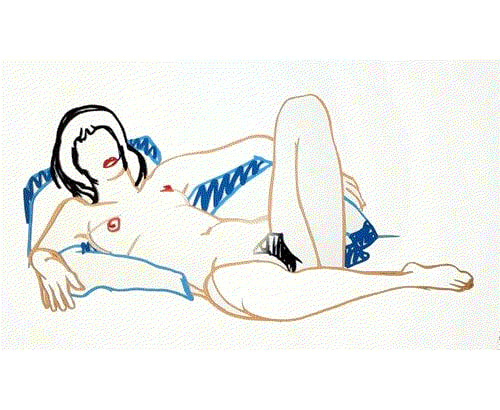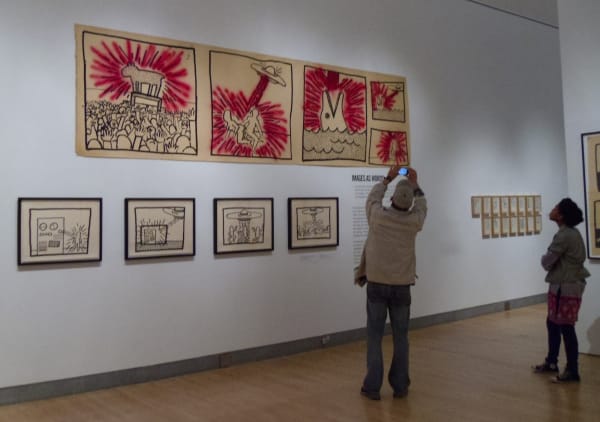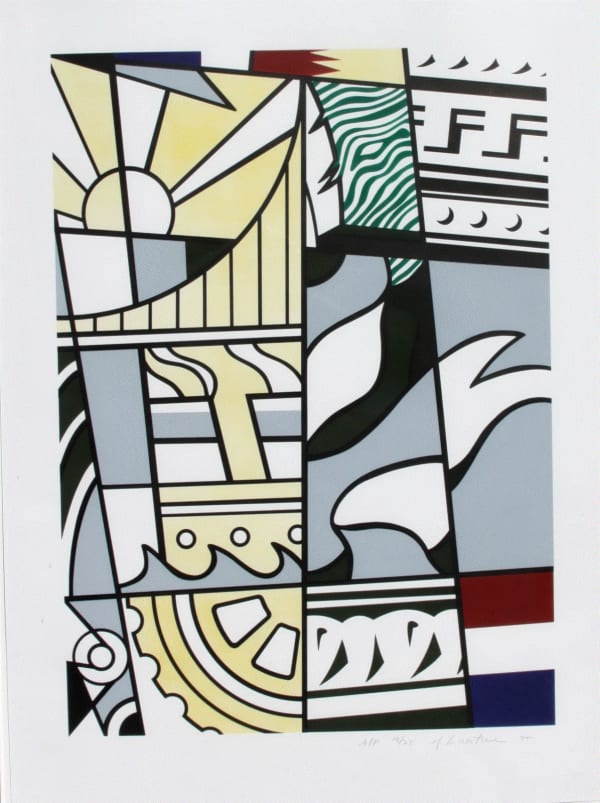Robert Rauschenberg
Robert Rauschenberg was an American artist who was a pioneer of the Pop art movement. He was born in Port Arthur, Texas, in 1925, and he studied at the Kansas City Art Institute and the Black Mountain College. In 1949, he moved to New York City, where he became involved in the avant-garde art scene.
Rauschenberg's early work was influenced by Abstract Expressionism, but he soon began to experiment with new forms of art. In 1954, he began creating his Combines, which were large-scale works that incorporated found objects, photographs, and other materials. The Combines were a radical departure from traditional painting, and they helped to define the Pop art movement.
Rauschenberg was also a prolific printmaker, and he created a number of important series of prints, including the "Rebus" series (1955-1964) and the "Combines" series (1954-1964). He also worked in other media, including photography, sculpture, and performance art.
Rauschenberg was a major figure in the American art world, and his work has had a profound influence on generations of artists. He was awarded the National Medal of Arts in 1993, and he died in 2008 at the age of 82.
Early Life
Robert Rauschenberg was born on October 22, 1925, in Port Arthur, Texas. He was the son of Milton Rauschenberg, a traveling salesman, and Dora Rauschenberg, a homemaker. Rauschenberg had two older sisters, Pat and Dot. Rauschenberg's childhood was marked by tragedy. When he was just five years old, his father died in a car accident. This event had a profound impact on Rauschenberg, and it would later influence his art.
Rauschenberg was a bright and curious child, and he showed an early interest in art. He would often draw and paint, and he would also take apart and rebuild radios and other machines. In 1940, Rauschenberg's family moved to Port Neches, Texas. Rauschenberg attended Thomas Jefferson High School, where he excelled in art and science. He also played the trombone in the school band.
After graduating from high school in 1943, Rauschenberg joined the U.S. Navy. He served for two years, and he was stationed in the Philippines. During his time in the Navy, Rauschenberg continued to draw and paint. He also began to experiment with photography.
Education
After leaving the Navy in 1945, Rauschenberg returned to Texas and enrolled at the Kansas City Art Institute. He studied at the Art Institute for two years, and he then transferred to the Black Mountain College in North Carolina. Black Mountain College was a progressive art school that was known for its experimental approach to education. Rauschenberg studied at Black Mountain College from 1948 to 1951, and he was exposed to a wide range of artistic influences, including Abstract Expressionism, Dada, and Surrealism.
Early Career
In 1951, Rauschenberg moved to New York City. He quickly became involved in the city's avant-garde art scene, and he began to exhibit his work in galleries and museums. In 1954, Rauschenberg began creating his Combines, which were large-scale works that incorporated found objects, photographs, and other materials. The Combines were a radical departure from traditional painting, and they helped to define the Pop art movement.
Rauschenberg was also a prolific printmaker, and he created a number of important series of prints, including the "Rebus" series (1955-1964) and the "Combines" series (1954-1964). He also worked in other media, including photography, sculpture, and performance art.
Later Career
Rauschenberg continued to be a major figure in the American art world throughout his career. He exhibited his work in major exhibitions around the world, and he received numerous awards, including the National Medal of Arts in 1993.
Rauschenberg died on May 12, 2008, at the age of 82. He was survived by his wife, Susan Weil, and their son, Christopher Rauschenberg.
Legacy
Robert Rauschenberg was a major figure in the American art world. His work was groundbreaking and influential, and it helped to shape the course of modern art. Rauschenberg was a true innovator, and his work continues to inspire and challenge artists today.
Send me more information on Robert Rauschenberg
-

Roy Lichtenstein Retrospective Planned at Whitney
Robert Rauschenberg's 100th Birthday Celebrations Continue October 24, 2025A retrospective of the works of Roy Lichtenstein (1923-1997) was supposed to open at the Whitney this week but has been postponed for a time,...Read more -

The Art Students League Celebrates 150th Anniversary
A Special Tribute to Robert Rauschenberg at the Art Students League Gala September 18, 2025The Art Students League is celebrating its 150th anniversary this year. Since 1875 great artists have walked through the doors of 215 West 57th Street...Read more -

The Works of Beatriz Milhazes at the Guggenheim
Exhibits planned to celebrate Robert Rauschenberg's 100th Birthday August 2, 2025Art has the power to make human ties stronger and help us think, feel, and look at things differently. - Beatriz Milhazes Beatriz Milhazes (b.1960)...Read more -

The Art Students League Celebrates 150 Years
Showcased works by Milton Avery, Adolph Gottlieb and other Art Students League Alumni June 20, 2025The Art Students League of New York is celebrating its 150th anniversary with an exhibition of works by many of its most talented artists. The...Read more -

Fine Art Print Week in New York
Fine Art Prints at Surovek Gallery March 28, 2025An etching is a conversation between artist and plate. - Rembrandt van Rijn Printmaking is controlled accident. - Robert Rauschenberg It’s Print Week in New...Read more -

Continued Celebrations Planned to Honor Roy Lichtenstein
Lichtenstein's Peanut Butter Cup Sold at Sotheby's March 6, 2025What can you paint that isn’t ridiculous from the outset? –Roy Lichtenstein Roy Lichtenstein’s Peanut Butter Cup, 1962 , sold for £1,019,000 ($2,085,000) at Sotheby’s,...Read more -

Tom Wesselmann Retrospective in Paris
December 12, 2024Tom Wesselmann (1931-2004) began his career as a cartoonist and illustrator for men’s magazines. It was after he left his home in Cincinnati and moved...Read more -

Thomas Hart Benton and Loie Hollowell at the Hirshhorn
November 14, 2024I have a sort of inner conviction that for all the possible limitations of my mind and the disturbing effects of my processes, for all...Read more -

Alex Katz Awarded the National Medal of Arts
October 24, 2024When you’re working with the tradition of art, you’re usually painting like the paintings you’ve seen; your vision is other people’s vision. You see things...Read more -

Andy Warhol's Tributes to the Famous
Wolf Kahn Remembered October 18, 2024The best thing about a picture is that it never changes, even when the people in it do. —Andy Warhol A few weeks ago, a...Read more -

Robert Rauschenberg's Works in New York and California
October 10, 2024Artists drag other parts of society into a confrontation with the unknown. - Robert Rauschenberg Works by Robert Rauschenberg (1925-2008) are currently on exhibit at...Read more -

Andy Warhol & Keith Haring. Party of Life in Munich
October 3, 2024'Andy's life and work made my work possible. Andy set the precedent for the possibility for my art to exist. He was the first real...Read more -

Remembering Richard Pettibone 1938-2024
September 24, 2024I wanted to be a great painter. What better way to do that than to copy a great painting? – Richard Pettibone Richard Pettibone died...Read more -

In Memoriam: Dorothy Lichtenstein, 1939-2024
The widow of Pop artist Roy Lichtenstein, and a generous patron of the arts, died at age 84 July 18, 2024Dorothy Lichtenstein died on July 4, 2024 at her home in Southampton, New York at age 84. The cause of death was reportedly heart failure...Read more -

Robert Motherwell: Pure Painting
September 1, 2023Most painting in the European tradition was painting the mask. Modern art rejected all that. Our subject matter was the person behind the mask. –...Read more -

Robert Rauschenberg: Speaking in Tongues
June 22, 2023When Robert Rauschenberg died at his home in Captiva Island in 2008, at age 82, he was remembered as someone who changed the way art...Read more -

Frank Stella: 1977 Screenprints at Surovek Gallery
January 17, 2019When Frank Stella moved to New York in 1958, at age 22, he had graduated from Princeton and just wanted to to paint. “I wasn’t...Read more -

Roy Lichtenstein’s Serendipity
May 24, 2017Serendipity in the Army Roy Lichtenstein was inducted into the US Army and sent to England just before Christmas in 1944. Although his induction interrupted...Read more


